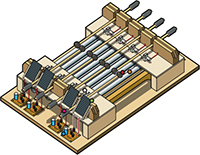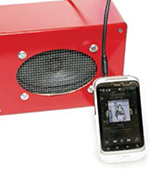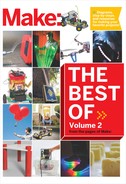PART 6
Music AND Audio
Mark Frauenfelder’s amazing range of accomplishments include having been the first editor-in-chief of Make: magazine, cofounder of the website Boing Boing, and author of the book Made by Hand. A dedicated evangelist of DIY culture, here Mark introduces you to the art of making cigar box guitars. The beauty of cigar box guitars is that you can make them from scrounged parts and materials found in any hardware store. With a few simple tools you probably already have in your workshop, you can make a musical instrument that will have a unique sound and provide entertainment for years to come.

IBM researcher Tom Zimmerman has contributed many projects to Make: magazine. He was drawn to DIY percussion instruments as a way to get kids interested in STEM through hands-on construction, as well as to capture the interest of less tech-oriented adults through art and music. “What’s enticing about drums,” he says, “is anyone can play them, and they are social; many people can play together like in a drum circle.” Tom updated his “Electronic Drum Kit” project especially for this volume. The clever design uses foil pads stretched over PVC pipes to create a unique electronic drum set hack.

Audiophile and maker Ross Hershberger developed the Squelette amp especially for Make: readers. (Turn to the article to find out what the name means.) It’s a cheap and simple chip-based amp that not only sounds great but also shows off your soldering skills at the same time with its see-through design. For this publication, Ross added some alternative cabinet designs that he created since the article’s original appearance.

Ross serves up a double helping of projects in this volume. His MonoBox speaker uses a simple circuit and is easy to build, but it delivers a powerful sound. Plug it into the headphone jack of your iPod or smartphone, and you’re ready to rock the house.
Rory Nugent created his solar xylophone for Make: several years ago. These days he is an engineer for littleBits Electronics, a company that is dedicated to making electronics fun and easy to understand for children. For his project, Rory drew inspiration from wind chimes, which draw natural energy from moving air to create music. Rory’s chimes give a voice to the sun.
Software engineer Stephen Hobley hails from the UK but migrated to the US in the late 90s. His laser harp is undoubtedly the most visually arresting musical instrument. You can find videos of British electropop diva Little Boots playing one of his hand-built devices on YouTube. The version you will find here, simpler and using inexpensive laser pointers rather than more expensive scanning lasers, still creates a great visual effect and a wide array of sounds.
